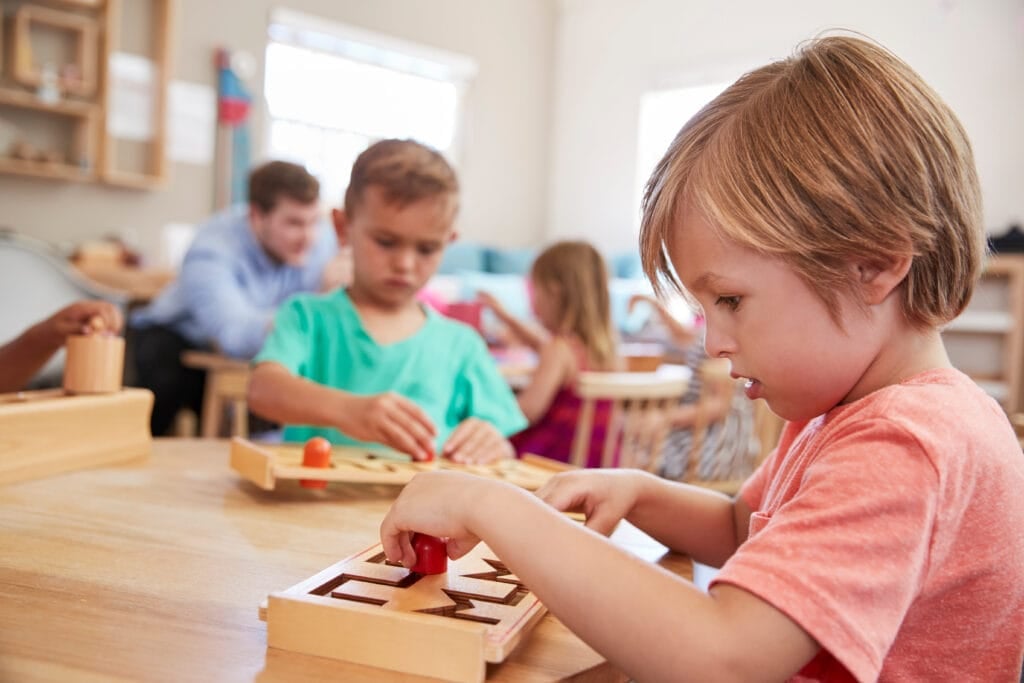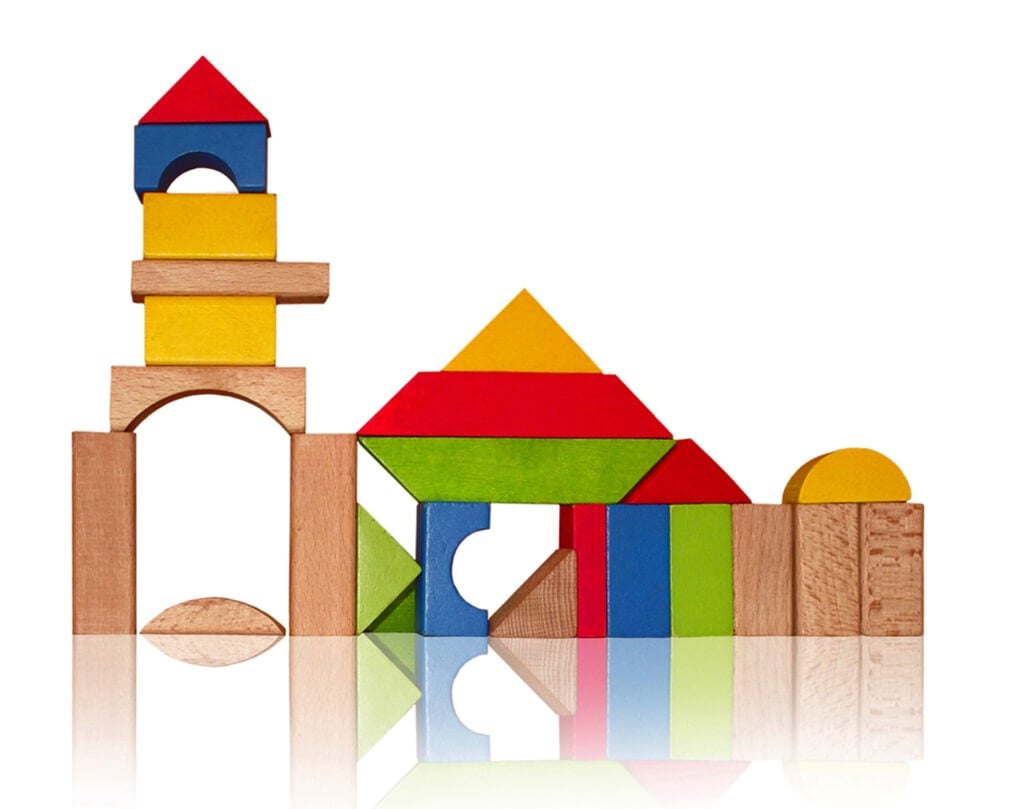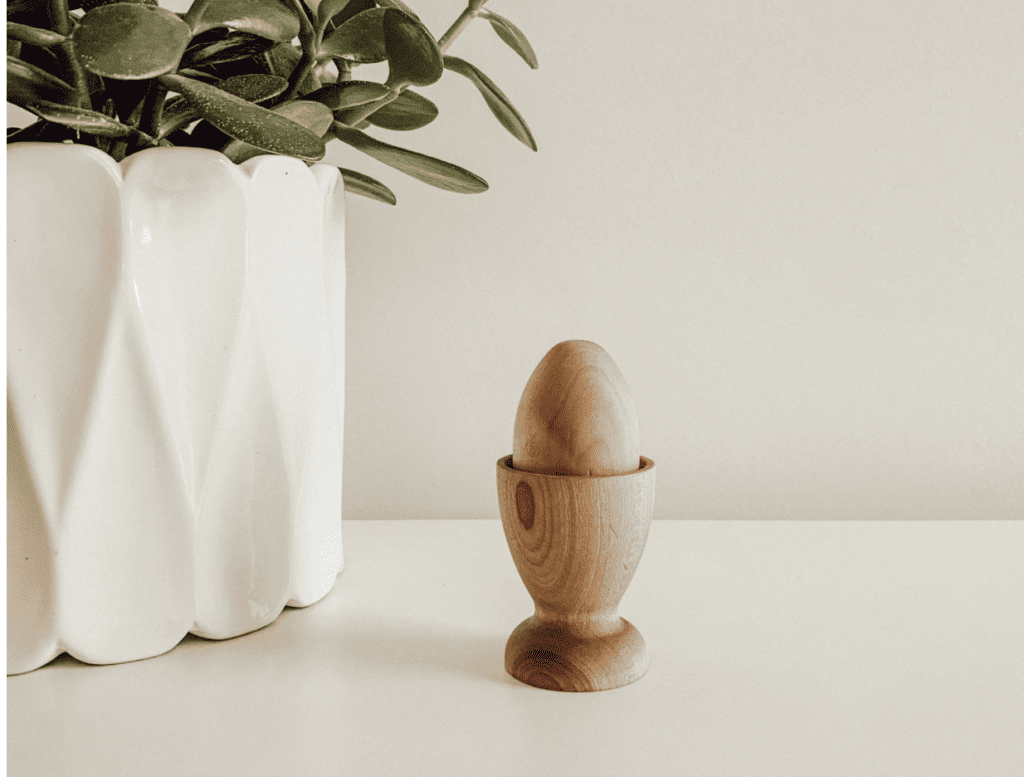Montessori for Today picks out furniture, educational tools, toys and lifestyle items that we think are the best and most exciting, based on independent research and careful consideration. On some occasions we earn revenue (at no additional cost to you) if you click the links and buy the products. But this doesn’t affect what we choose to highlight and we will never let it bias our coverage.
The Montessori method encourages children to explore their environment, develop their senses, and learn at their own pace.
Here are the 12 best Montessori activities for 3-year-olds:
On This Page…
- Here are the 12 best Montessori activities for 3-year-olds:
- 1. Fastening and Unfastening Buttons
- 2. Moving a Chair
- 3. Folding Activities
- 4. Matching Keys to Locks
- 5. Brush and Dustpan
- 6. Sorting Objects by Size
- 7. Washing Dishes
- 8. Flower Arranging
- 9. Cutting Fruit
- 10. Spreading Toppings
- 11. Threading
- 12. Matching Colors
1. Fastening and Unfastening Buttons
The
The fastening and unfastening buttons activity involves providing children with clothing items with buttons, such as shirts, jackets, or pants. 3 years old is the perfect time for a child to learn to dress and undress.
For this activity, you must demonstrate how to fasten and unfasten the buttons. Initially, the buttons should be larger and easier to manipulate. As the child becomes more proficient, you can present them with smaller, more challenging buttons.
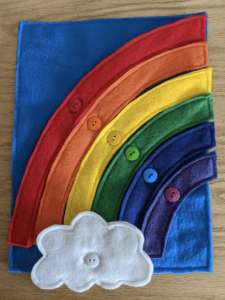
Why It’s Beneficial: Firstly, it helps develop their fine motor skills, essential for performing tasks such as writing, drawing, and using utensils. Fine motor skills also help children to develop dexterity, precision, and control over their movements.
This activity encourages children to become more independent and self-sufficient. As they learn to dress and undress, they become more confident in their abilities and more willing to try new things. This fosters a sense of self-esteem and a positive self-image.
2. Moving a Chair
Another Practical Life activity that is easy to do at home with a 3-year-old is moving a chair. Moving a chair may seem simple, but it involves many different skills. Children must use their muscles, balance, and spatial awareness to move a chair from one place to another successfully.
For this activity, you will need a child-sized chair. Show the child how to lift the chair, which should be done by placing their hands under the seat and then carrying it to the desired location. You can also show them how to turn the chair to be placed in the correct position.
Why It’s Beneficial: Moving a chair teaches young children how to move chairs safely and efficiently and shows them how they can manipulate their environment. Moving a chair helps children develop their gross motor skills, which are essential for performing tasks such as running, jumping, and climbing.
The activity also promotes coordination and spatial awareness. By learning how to navigate through space while carrying a chair, children better understand their surroundings and how to move through them safely.
3. Folding Activities
Folding activities belong in the Practical Life curriculum. Folding activities are simple to set up and use items you already have at home.
It is recommended that you introduce the concept of folding to a child by giving them smaller items to fold. For the first activity, give the child a napkin, handkerchief, tea towel, or placemat to fold. Once the child has mastered folding the smaller items, you can introduce a larger item, such as a pillow case, and then progress to clothing.
Why It’s Beneficial: This activity is designed to help children develop their fine motor skills, concentration, and independence. It also helps children learn how to care for their clothing and promotes a sense of responsibility. By folding clothes, children also learn about organization and order.
4. Matching Keys to Locks
The
If you do not have locks and keys, you may need a quick trip to the hardware store. For this activity, you will need three locks of different sizes with matching keys. Place the locks on a tray separate from the keys but locked. Show the child the goal of the activity and then let them explore the locks and keys.

Why It’s Beneficial: Matching keys to locks can help children develop problem-solving skills. By matching the keys to the locks, children must use their cognitive skills to figure out which key goes with which lock.
Additionally, the activity encourages the development of fine motor skills, which will impact later activities such as writing and drawing.
5. Brush and Dustpan
This Practical Life activity is a necessary skill for young children to have within a Montessori environment. Learning to use a brush and dustpan is an essential skill that enables children to clean up the messes made when something is spilled or broken.
Spills, messes, and broken materials (glass pitchers or bowls) happen in a
You can do this activity inside or out. To set it up all you need is to put something on the floor or on a table that needs sweeping up. Don’t forget to set the child up for success by showing them the goal of the activity.
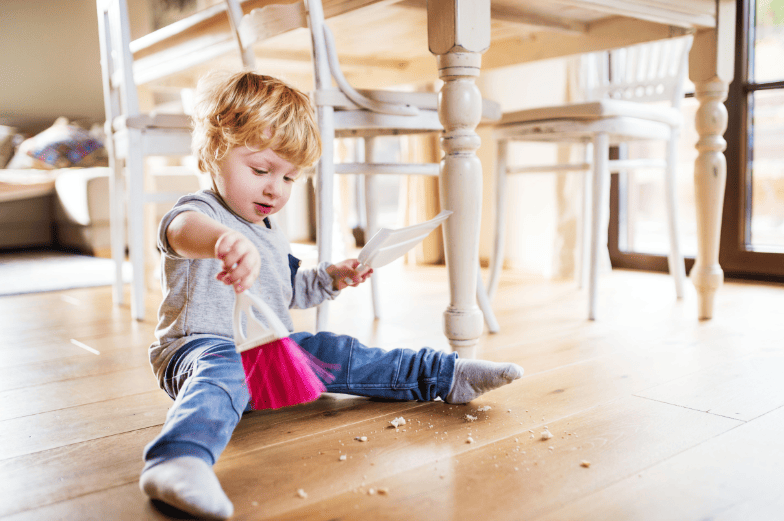
Why It’s Beneficial: This activity teaches children important life skills, and to take pride and care of their environment. In addition, using a brush and dustpan helps children to develop fine motor skills. The activity also helps to foster a sense of independence.
6. Sorting Objects by Size
The
For this activity, place the objects on a tray, unorganized. Show the child how to sort the objects by size. Start with the largest items and work your way to the smallest.
Why It’s Beneficial: This activity benefits young children by building visual discrimination skills, hand-eye coordination, and concentration. These skills can be applied to other areas, such as reading and writing, where children must distinguish between letters and words.
7. Washing Dishes
The
For this activity, you will need a stool, an apron, washing up liquid, a sponge, a drying rack, and a dish towel. You should demonstrate to the child how to wash dishes, and then let them explore. The first few times you do this activity, there may be more pouring and splashing than anything else but that will not last.
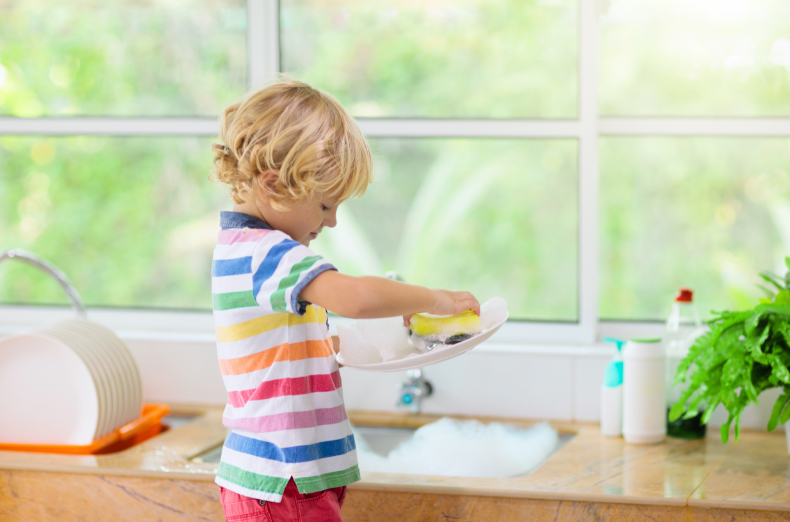
Why It’s Beneficial: This activity helps children develop independence, concentration, fine motor skills, and care for their environment. Additionally, this activity provides a sense of purpose and pride in accomplishing real-life tasks, which contributes to developing their self-esteem and sense of responsibility.
8. Flower Arranging
Flower arranging is a simple Practical Life activity that involves arranging flowers in a vase. The activity can be done using shop-bought flowers or wildflowers. You could combine flower arranging with a natural walk to maximize the experience.
For this activity, you will need a vase, flowers, water pitcher, and safety scissors (if the child is developmentally ready). Place the materials on the tray and show the child how to place them in the vase and cut the stem if it is too long to fit.
Why It’s Beneficial: Flower arranging helps children develop their coordination and fine motor skills. Additionally, the activity helps children to develop their sense of order and attention to detail and instill a sense of responsibility. It is also an opportunity for children to connect with nature and develop an appreciation for the natural world.
9. Cutting Fruit
The
To set up the activity, provide the child with a variety of fruits, such as bananas, apples, or oranges, along with a child-sized knife and a cutting board. The child is then shown how to hold the knife and safely cut the fruit into pieces. We also like these wavy knives from Amazon that are easy for small hands to hold and safely cut.
Why It’s Beneficial: Cutting fruit helps children to develop their fine motor skills and hand-eye coordination. Additionally, the activity is an example of the
By providing children with opportunities to learn practical skills, the Montessori approach can help children develop a greater sense of independence and competence.
10. Spreading Toppings
Spreading toppings on crackers or bread is another simple Practical Life activity for 3-year-olds. The
All you need for this activity is a topping, crackers, a child-sized plate, and a knife or spoon. To start the activity, show the child how to hold the knife or spoon and safely spread the toppings onto the crackers.
Why It’s Beneficial: The activity can help children develop independence and self-esteem. Spreading toppings onto crackers allows children to develop fine motor skills and hand-eye coordination.
11. Threading
Montessori threading activities involve stringing objects, such as beads or buttons, onto a string or a shoelace. It is a versatile activity that is simple to set up with items you already have at home.
An easy DIY threading activity involves colorful straws (jumbo-sized for children just starting threading work), woolen string, thread, or a shoelace. Once you have your materials, cut the straws into segments and place them on a tray with the string. Demonstrate the activity before letting the child explore the materials.

Why It’s Beneficial: This activity can help children develop their concentration and focus while they develop their fine motor skills. The children are developing their hand muscles and hand-eye coordination by manipulating objects and strings.
12. Matching Colors
The
Place the homemade color tablets on a tray. Show the child how to sort the tablets by their colors by matching pairs of the same colors.
Why It’s Beneficial: Matching colors helps children develop visual discrimination skills and develop concentration. The activity can also help develop language skills by discussing the different colors and their properties.



